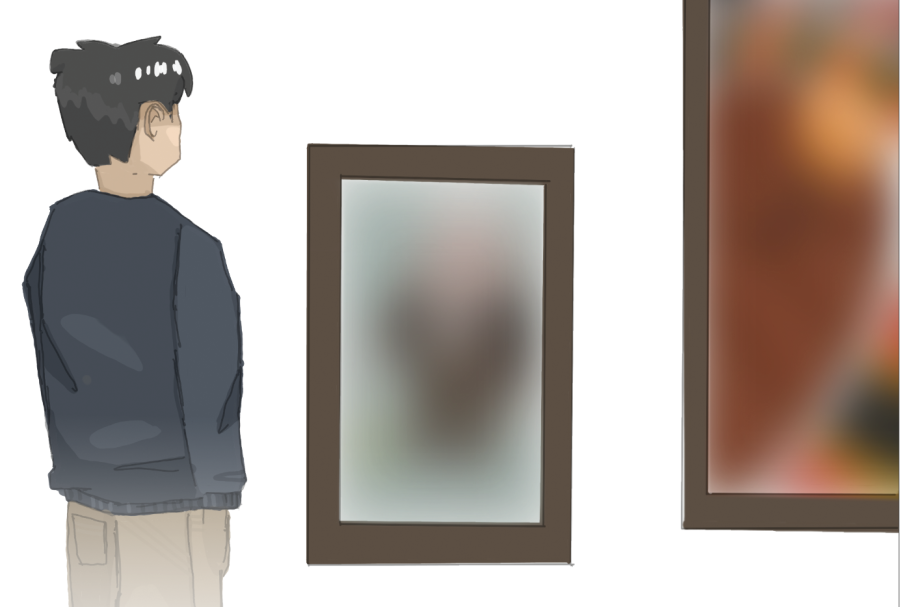Opinion: Canvas conundrum: An art history professor’s brush with controversy
Headlines like, “A lecturer showed a painting of the Prophet Muhammad. She lost her job” are beginning to shock me less and less.
On Jan. 8, the New York Times published an article with that title describing an incident that occurred at Hamline University, a small private school in Saint Paul, Minnesota.
Professor Erika López Prater, an adjunct professor teaching global art history, showed her class a 14th-century painting that depicted the Prophet Muhammad. Prater knew that many Muslims prohibit themselves from seeing depictions of Muhammad, so she gave her class multiple warnings — both written in the course syllabus and verbally a few minutes prior to the displaying of the painting. Senior Aram Wedatalla stayed in the class despite the warnings, saw the painting and complained to administration, saying that showing the painting was an attack on the Muslim religion. Prater was fired.
When I first read the article, my initial reaction was confusion. Why did the student stay in the class after hearing the warnings? Why didn’t the administration hear out Prater’s side of the story? Even if Prater didn’t give any warnings, would that still have warranted firing her?
The more I thought about it, though, I realized that this is the direction our world is heading: where one student’s feelings matter more than the education of everybody else. As a senior planning on attending college next year, this culture of sensitivity and emotionalism worries me. The fact that a student can voluntarily take a class that covers religious art history, choose to stay in the classroom despite knowing that a painting they prohibit themselves from seeing would be shown, and still be supported by the university’s administration over Prater — who took every realistic measure to prevent this from happening — is a marker of where education in the modern world is heading. How can students receive the best possible education when it is being compromised in fear of one student feeling offended?
Palo Alto High School AP Art History teacher Susan La Fetra has a different view on the Hamline incident. As a teacher, La Fetra said, it is important to create a safe learning environment for students.
“Do you know how much art there is in the entire world?” La Fetra said. “Why would she [Prater] pick that particular thing to spend the precious time she has with her students? It does not make sense. It is not doing her job.”
According to the New York Times article, however, the painting, from 14th century Muslim Rashid-al-Din’s “A Compendium of Chronicles,” is commonly shown in art history classes. The article also listed other art history professors, including Christine Gruber from the University of Michigan and Omid Safi from Duke University, who expressed the idea that showing art of this kind is important. In fact, Gruber went so far as to say that not covering the piece while studying Islamic art “would be like not teaching Michelangelo’s ‘David.’”
In addition to the idea that Prater could have shown a different painting that did not contain a depiction of Muhammad, La Fetra pointed out that it is important for teachers to create a comfortable environment for their students.
“I understand that she [Prater] said she warned students that she was going to show images of leaders of major religions,” La Fetra said. “If I warned you that I’m going to scream obscenities in your face, it still doesn’t make it okay when I start doing that.”
But there’s a massive difference between screaming obscenities in someone’s face and showing what is arguably an incredibly important piece of religious art history in an academic setting. The point of screaming obscenities is strictly to offend and insult, whereas the intention of displaying the painting was for students to study, scrutinize and learn. While they must be handled with tact, controversial and difficult topics like slavery or the Holocaust are some of the most academically valuable and should not be shied away from.
According to Inside Higher Ed, professors all over the country are resigning from long-held positions. This school year, teacher shortages have been reported in 47 states, according to the Department of Education. CNN says that the shortages could be a result of “low pay, high student-to-teacher ratios, poor working conditions, post-pandemic learning loss, school shootings and social or emotional issues with students, [and] teachers across the nation are also grappling with culture wars over what they can and cannot teach in the classroom.”
But teaching has never been a glamorous job. It is my belief that the last issue — increasing censorship in the classroom and sensitivity to certain academic subjects — is a main cause of these shortages. If we want classrooms to be a place where new ideas are introduced and grappled with, we need to create an environment where teachers feel comfortable exposing their students to potentially uncomfortable topics.
Once that happens, maybe headlines designed to be surprising will actually surprise me again.





